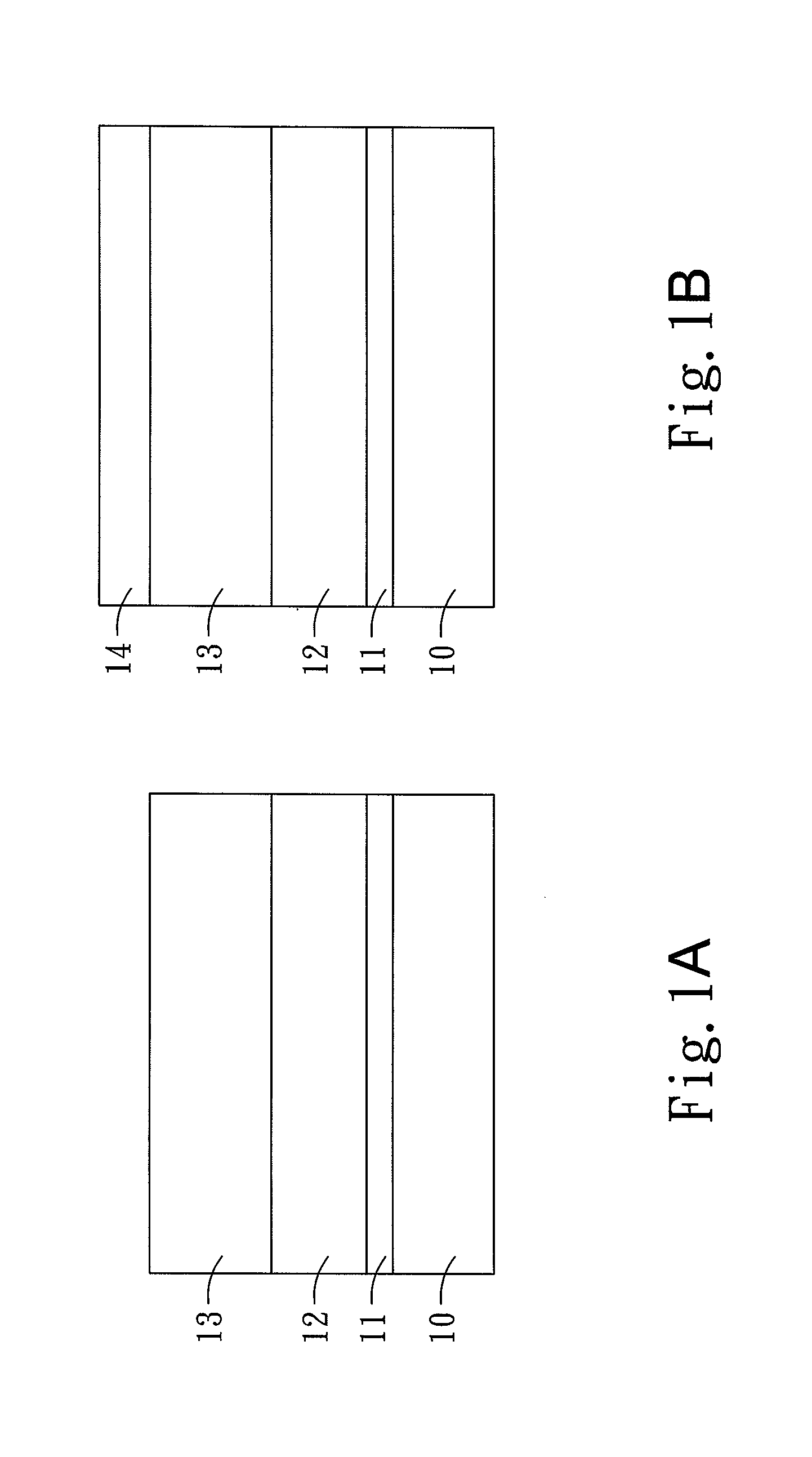Method to produce high electron mobility transistors with Boron implanted isolation
a high electron mobility transistor and isolation structure technology, applied in the direction of basic electric elements, electrical apparatus, semiconductor devices, etc., can solve the problems of increasing leakage current, reducing breakdown voltage, and reducing breakdown voltage, so as to prevent the phenomenon of activation, prevent the leakage current, and enhance the electrical isolation of the high electron mobility transistor
- Summary
- Abstract
- Description
- Claims
- Application Information
AI Technical Summary
Benefits of technology
Problems solved by technology
Method used
Image
Examples
second embodiment
[0034]which is mostly the same as the first embodiment except that executing an ion implantation process plural times includes the following four ion implantation processes: one first ion implantation process, wherein the implantation energy of the Boron ion beam 20 is between 10 KeV and 50 KeV, and the Boron ions of the Boron ion beam 20 are at a dose of 1011 / cm−3 to 1013 / cm−3; two second ion implantation processes, wherein the implantation energy of the Boron ion beam 20 is between 50 KeV and 200 KeV, and the Boron ions of the Boron ion beam 20 are at a dose of 1012 / cm−3 to 1013 / cm−3; and one third ion implantation process, wherein the implantation energy of the Boron ion beam 20 is between 200 KeV and 300 KeV, and the Boron ions of the Boron ion beam 20 are at a dose of 1012 / cm−3 to 1013 / cm−3.
[0035]In the second embodiment, the substrate 10 is made of SiC; the nucleation layer 11 is made of AlN; the buffer layer 12 is made of GaN; and the barrier layer 13 is made of AlGaN; the in...
third embodiment
[0036]please refer to FIG. 2A˜2H, which show the process flow diagram of an embodiment of the present invention. Forming the structure as shown in FIG. 2A by the following four steps: forming a nucleation layer 11 on a substrate 10; forming a buffer layer 12 on the nucleation layer 11; forming a barrier layer 13 on the buffer layer 12 and forming a cap layer 16 on the barrier layer 13. After these four steps, the structure, shown in FIG. 2A, with the substrate 10, the nucleation layer 11, the buffer layer 12, the barrier layer 13 and the cap layer 16 is formed.
[0037]The substrate 10 is made of SiC, Si, Diamond, Sapphire or GaN; the nucleation layer 11 is made of AlN; the buffer layer 12 is made of GaN, AlGaN or AlN; the barrier layer 13 is made of AlGaN or InAlN; and the cap layer is made of GaN.
[0038]Please refer to FIG. 2B, which shows the step: coating a photoresist layer 14 on the cap layer 16.
[0039]Please refer to FIG. 2C, which shows the step: photomasking at least one isolati...
fourth embodiment
[0050]which is mostly the same as the third embodiment except that executing an ion implantation process plural times includes the following four ion implantation processes: one first ion implantation process, wherein the implantation energy of the Boron ion beam 20 is between 10 KeV and 50 KeV, and the Boron ions of the Boron ion beam 20 are at a dose of 1011 / cm−3 to 1013 / cm−3; two second ion implantation processes, wherein the implantation energy of the Boron ion beam 20 is between 50 KeV and 200 KeV, and the Boron ions of the Boron ion beam 20 are at a dose of 1012 / cm−3 to 1013 / cm−3; and one third ion implantation process, wherein the implantation energy of the Boron ion beam 20 is between 200 KeV and 300 KeV, and the Boron ions of the Boron ion beam 20 are at a dose of 1012 / cm−3 to 1013 / cm−3.
[0051]In the fourth embodiment, the substrate 10 is made of SiC; the nucleation layer 11 is made of AlN; the buffer layer 12 is made of GaN; and the barrier layer 13 is made of AlGaN; the ca...
PUM
 Login to View More
Login to View More Abstract
Description
Claims
Application Information
 Login to View More
Login to View More - R&D
- Intellectual Property
- Life Sciences
- Materials
- Tech Scout
- Unparalleled Data Quality
- Higher Quality Content
- 60% Fewer Hallucinations
Browse by: Latest US Patents, China's latest patents, Technical Efficacy Thesaurus, Application Domain, Technology Topic, Popular Technical Reports.
© 2025 PatSnap. All rights reserved.Legal|Privacy policy|Modern Slavery Act Transparency Statement|Sitemap|About US| Contact US: help@patsnap.com



